MARIANI’S
Virtual
Gourmet
January 7, 2018
NEWSLETTER
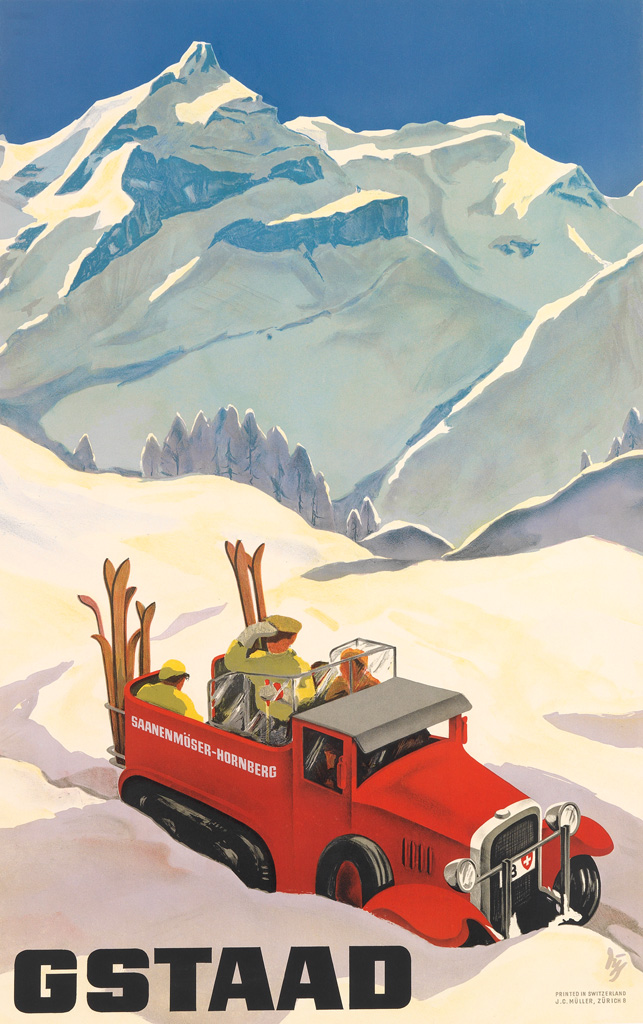
❖❖❖
IN THIS ISSUE
MINNEAPOLIS BEFORE OR
AFTER THE SUPER BOWL
By John Mariani
NEW YORK CORNER
GRAND TIER
By John Mariani
VIVE LE CIRQUE!
By John Mariani
NOTES FROM THE WINE CELLAR
A TASTING OF GREAT BORDEAUX
AT CHÂTEAU LATOUR
By John Mariani
❖❖❖
MINNEAPOLIS BEFORE OR
AFTER THE SUPER BOWL
Part One
BY JOHN MARIANI

(in warmer weather)
Photo: Krivit Photography, courtesy Meet Minneapolis
Minneapolis
and
St. Paul may be called Twin Cities populated by
Minnesotans, but each has its own character. As
a casual visitor last month it was not something
I had time to discern on my own, but inquiries
of the natives suggested that the latter is more
laid back than the former, whose population is
100,000 larger. What was easy to see is that Minneapolis
is on a building boom along its broad avenues,
quickly filling up with scores of nearly
identical glass condos. As one local
said, “St. Paul is the last city of the East and
Minneapolis is the first city of the West.”
What was easy to see is that Minneapolis
is on a building boom along its broad avenues,
quickly filling up with scores of nearly
identical glass condos. As one local
said, “St. Paul is the last city of the East and
Minneapolis is the first city of the West.”
Whether or not
you’re actually attending the Super Bowl LII—whose
current average ticket price is $4,320—which as of
this writing still hasn’t come down to the final
two teams, winter becomes Minneapolis in the ways
only American cities settled by Scandinavians and
Germans can.
For while the excitement builds around the
Super Bowl, the lead-up is a festival week called
the annual Great Northern from January 26 to
February 4.
Its boosters believe it’s a good way to
beat the cold the locals are used to. As
people in the Southwest insist that 110 degrees
isn’t all that terrible because it’s dry heat,
Minnesotans insist once the temperature drops
below zero, any further drop really isn’t all that
noticeable.
Sponsored by
Target, which is headquartered in Minneapolis, the
Great Northern, which includes the Saint Paul Winter
Carnival (January 25-February 10), whose events
include the Rice Park Ice Carving competition
and a Pioneer
Press Treasure Hunt.
The Great Northern will host the U.S. Pond Hockey
Championships on Lake Nokomis, which is as
expressive of the city’s winter character as is
the City of Lakes Loppet Ski festival, which
includes an ice
pyramid, fire dancers, and an enchanted forest,
and the Columbia Sportswear Skate Marathon that
snakes 26 miles through the icebound city. And
what would a winter festival be without a fast and
furious curling exhibition at the Frogtown Curling
Club?
an ice
pyramid, fire dancers, and an enchanted forest,
and the Columbia Sportswear Skate Marathon that
snakes 26 miles through the icebound city. And
what would a winter festival be without a fast and
furious curling exhibition at the Frogtown Curling
Club?
Food events will dot the Twin Cities, including a Saint Paul’s Chef’s Experience, an outdoor feast held by the restaurants Saint Dinette and Corner Table and Revival at the Saint Paul's Farmer's Market in Lowertown. The Surly Brewing Co. will also hold an outdoor party with music and a bonfire.
At any time of the year Minneapolis has a remarkable array of cultural activities and institutions, most strikingly the Minneapolis Institute of Art, spread over eight acres. With nearly 90,00 artworks the Institute’s departments include Africa and the Americas; Chinese and Southeast Asia; Japanese and Korean, Photography; Contemporary Art; Decorative Textiles, and 900 European and American paintings from the 14th century to the present.
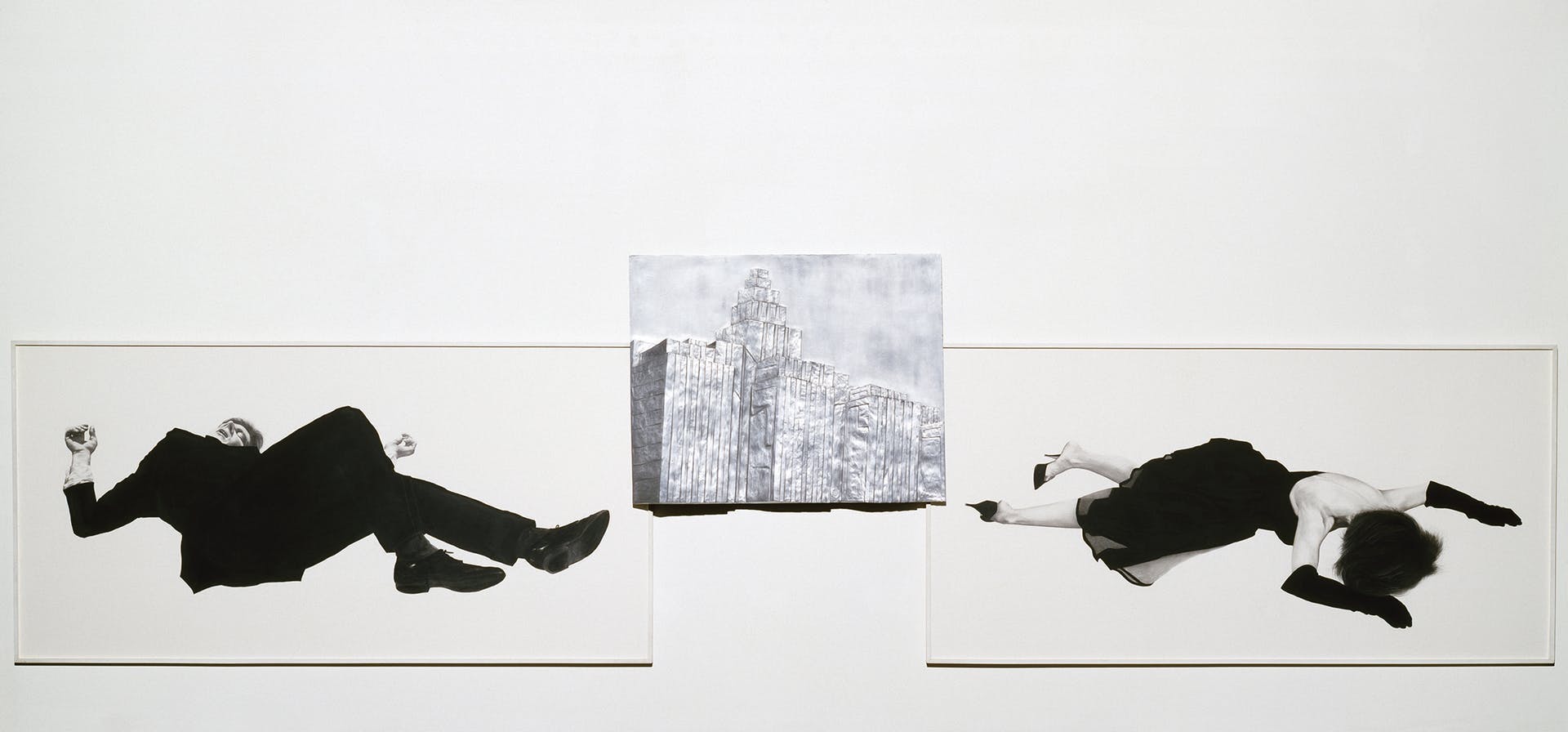 The
Walker Art
Center of contemporary art, founded in
1940, has now greatly expanded to a new building
designed by Swiss architects Jacques Herzog and
Pierre Meuron made of aluminum mesh panels and a
connecting glass hallway, with the
restoration two years ago of the outdoor
Sculpture Garden set on what was once marshland.
From now until March 18, Adiós Utopia:
Dreams and Deceptions in Cuban Art Since 1950 looks
at 65 years of revolutionary Cuban art (left) through
more than 100 works of painting, graphic design,
photography, video, installation, and performance
created by more than 50 Cuban artists and
designers. Nothing
of this breadth and depth has been shown in the
U.S. since 1944, when the Museum of Modern Art in
New York presented Modern Cuban
Painters.
The
Walker Art
Center of contemporary art, founded in
1940, has now greatly expanded to a new building
designed by Swiss architects Jacques Herzog and
Pierre Meuron made of aluminum mesh panels and a
connecting glass hallway, with the
restoration two years ago of the outdoor
Sculpture Garden set on what was once marshland.
From now until March 18, Adiós Utopia:
Dreams and Deceptions in Cuban Art Since 1950 looks
at 65 years of revolutionary Cuban art (left) through
more than 100 works of painting, graphic design,
photography, video, installation, and performance
created by more than 50 Cuban artists and
designers. Nothing
of this breadth and depth has been shown in the
U.S. since 1944, when the Museum of Modern Art in
New York presented Modern Cuban
Painters.
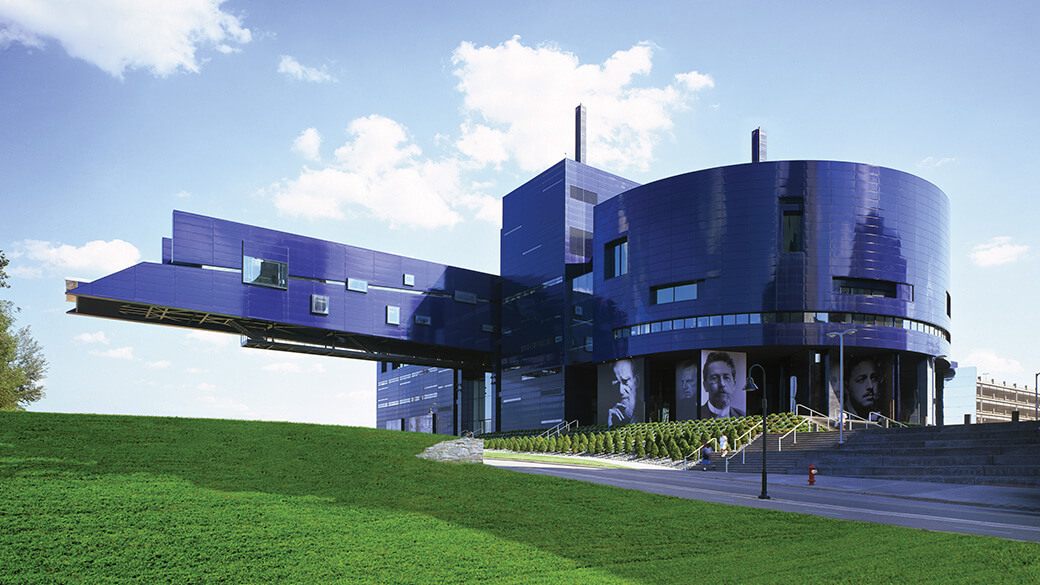
Since 1963 the Guthrie Theater has been one of America’s most respected venues for repertory performing arts, cast in the spirit of founder Sir Tyrone Guthrie (who passed away in 1971), who envisioned regional theater as a Midwestern alternative to the brash, ever-more commercial character of Broadway.
Hamlet was its first production, when the Guthrie was only a summer theater. Since then the Theater has gone through artistic, managerial and financial troughs, but it had a resurgence in the 1970s and became nearly self-sufficient by the end of the decade. No longer a repertory theater, by 2000 the organization had outgrown itself and a new Theater (right) was to be built at a cost of $125 million on the banks of the Mississippi River on the east side of downtown, debuting in June, 2006, reviving Tyrone Guthrie’s original belief that “The river itself was what most charmed and amazed us. . . . Eventually the Twin Cities will realize that their river can be, and ought to be, a wonderful life-giving amenity.”
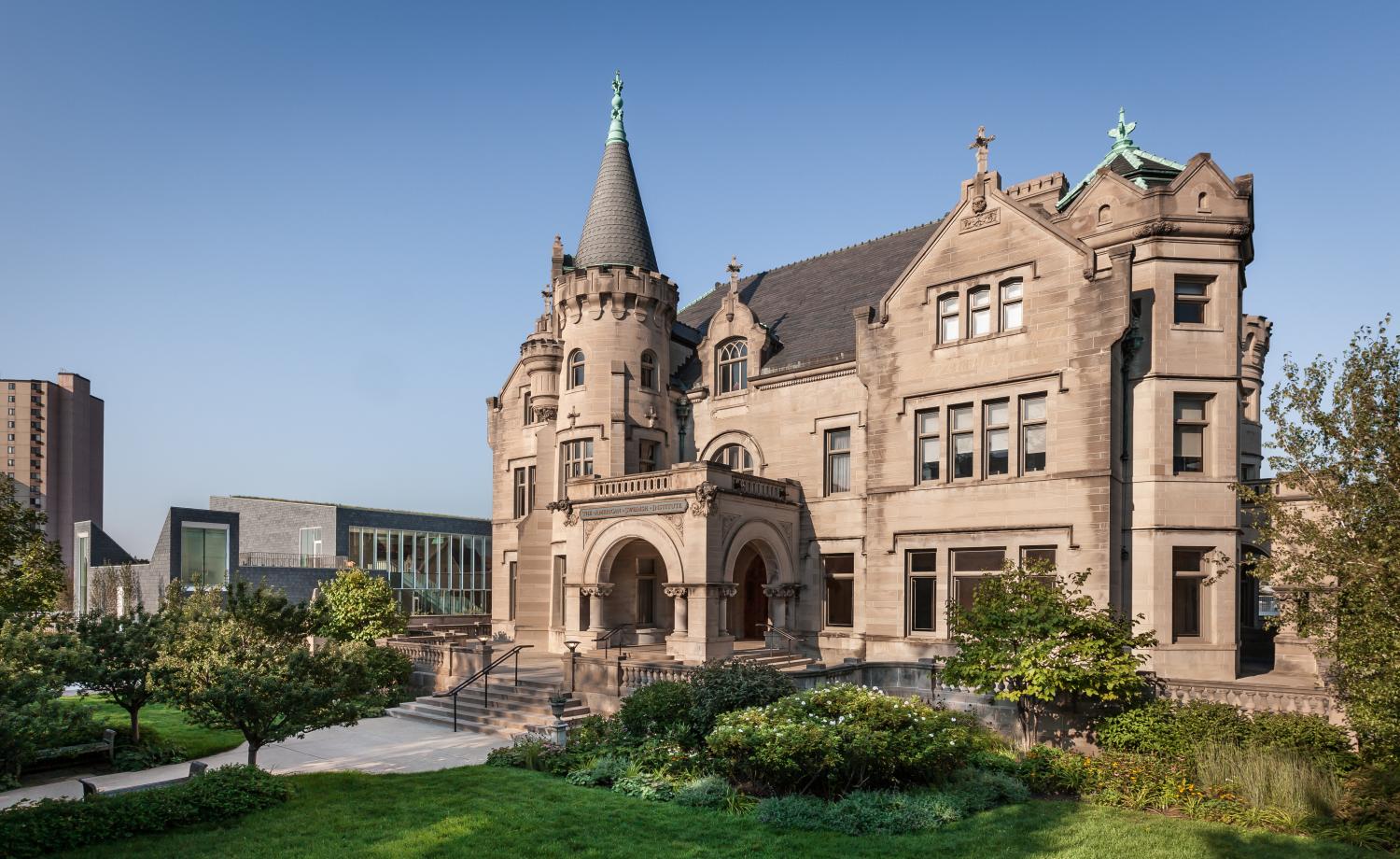 One
of the best things about the new Theater is that
anyone can visit it throughout the day without
attending a performance, walking through its vast
spaces and up the fourth level “Endless Bridge”
that overlooks St. Anthony Falls (above).
One
of the best things about the new Theater is that
anyone can visit it throughout the day without
attending a performance, walking through its vast
spaces and up the fourth level “Endless Bridge”
that overlooks St. Anthony Falls (above).
I certainly would not miss a visit to the
beautiful American Swedish Institute
(left),
located in the former Turnblad Mansion attached to
the modern Nelson Cultural Center. The
mansion, which has been 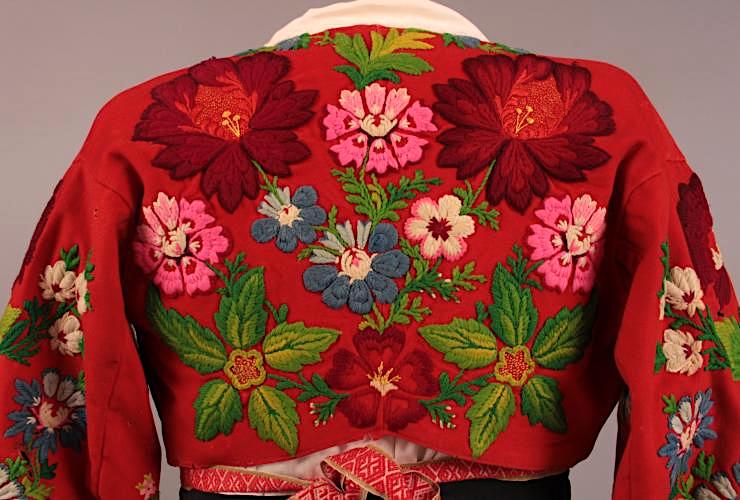 rightly
compared with the Gardner Museum in Boston and the
Frick in New York, was built by Swan Turnblad,
publisher of Svenska Amerikanska Posten, the
largest Swedish language newspaper in the U.S.; he and
his family lived in the house until 1929, when he
donated it to what is now called the American
Swedish Institute. The mansion’s interior was done
in exquisite woodwork, with eleven Swedish tile
stoves. Dining rooms and bedrooms look much the
way they were, but the grandeur of it never spills
over into ostentation, which would be an affront
to Swedes.
rightly
compared with the Gardner Museum in Boston and the
Frick in New York, was built by Swan Turnblad,
publisher of Svenska Amerikanska Posten, the
largest Swedish language newspaper in the U.S.; he and
his family lived in the house until 1929, when he
donated it to what is now called the American
Swedish Institute. The mansion’s interior was done
in exquisite woodwork, with eleven Swedish tile
stoves. Dining rooms and bedrooms look much the
way they were, but the grandeur of it never spills
over into ostentation, which would be an affront
to Swedes.
The Cultural Center includes more than 7,000 museum objects (right) that express the best of contemporary Swedish culture and the history of immigrants who settled Minnesota, whose DNA can readily be seen in the faces of the people who work in or visit the Center. There is also a café inside called FIKA, after the Swedish term for a coffee break, serving specialties like Swedish meatballs ($12), gravlax ($12), smörgasår open-faced sandwiches ($13), and lingonberry rice pudding ($8).
 Far
smaller and much more modest is the city’s Somali
Museum of Minnesota, which is not easy to
find but well worth ferreting out. Located
in the basement of a bodega, the small space was
founded by Osman Mohammed Ali, a local
entrepreneur proud of his African heritage and of
the contributions of 25,000 Somalians who have
made Minnesota their home and run more than 600
businesses in the Twin Cities. With more than 700
pieces, the museum is ever growing, including
nomadic artwork and a thatched hut with a weaving
rack and numerous examples of the colorful woven
fabrics indigenous to Somalia.
Far
smaller and much more modest is the city’s Somali
Museum of Minnesota, which is not easy to
find but well worth ferreting out. Located
in the basement of a bodega, the small space was
founded by Osman Mohammed Ali, a local
entrepreneur proud of his African heritage and of
the contributions of 25,000 Somalians who have
made Minnesota their home and run more than 600
businesses in the Twin Cities. With more than 700
pieces, the museum is ever growing, including
nomadic artwork and a thatched hut with a weaving
rack and numerous examples of the colorful woven
fabrics indigenous to Somalia.
The Museum was clearly a labor of love by Ali, but
I do hope you meet the remarkable young curator
named Sarah Larsson—her name is clearly of Swedish
heritage—whose love and dedication to the Museum
is palpable. Trained as an anthropologist and
community advocate, with an M.A. from Yale
University, Sarah is also a touring folk singer of
Eastern European song. It is rare to meet someone
of her background, intelligence and sheer
exuberance anywhere, but to meet her in
Minneapolis is to find just how international this
splendid Midwestern city has become.
As for
the Super Bowl (as I write this the Vikings still
have a very good chance to make it) whatever the
weather will be outside, the insipidly named U.S.
Bank Stadium will be all warm and toasty owing to
a translucent ceiling that somehow keeps the heat
in. Say the words "state of the art" and you
might as well be saying modern NFL football
stadium. Mineapolis's is only a year old--only
Atlanta's is newer--and if God were a football fan
this is what he'd build, with seats for 66,625
people, 26 food service operations, its own sports
art collection, huge well-stocked sky boxes, and
exterior glass walls the size of a hangar that
slide effortlessly open to let in the fans.
A guided tour takes 90 minutes, proving that there
is nothing bigger than football, no matter how
cold it gets in America.
❖❖❖
VIVE LE CIRQUE!
By John Mariani

Were
I
about to write an elegy for the New Year’s Eve
closing of Le Cirque, I would lament the demise
of not only one of the great restaurants in NYC
but also one of the most important. Fortunately,
I do not need to do so because, despite its
closing on East 58th Street, Le Cirque will
re-open elsewhere—word is it will be this
spring—and, I trust, be better than ever.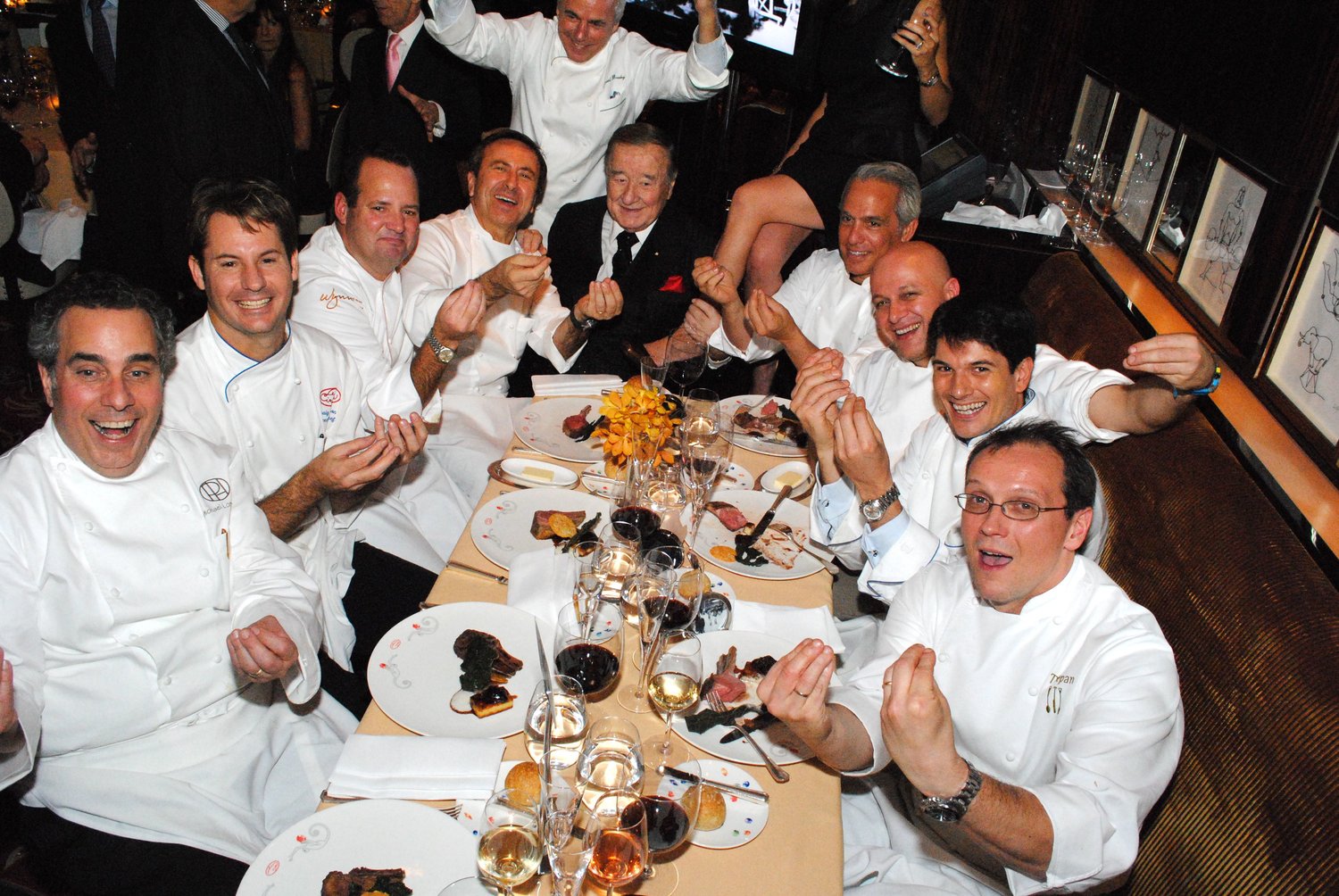
It would be easy enough to
describe Le Cirque as one of the last of the old
line French restaurants and a place where only the
fashionable people dined. But
neither would be true. For nearly a half century
Le Cirque was one of the most innovative
restaurants in any decade, graduating scores of
cooks who became distinguished chefs in their own
restaurants, including Michael Lomonaco, David
Bouley, Thomas Keller, Bill Telepan, Rick Moonen,
Geoffrey Zakarian and so many others (right). The
restaurant’s executive chefs through the years
were among the most respected in their field, from
Alain Sailhac and Daniel Boulud to Sottha Kuhn and
Sylvain Portay, all of them masters and teachers,
each keeping Le Cirque in the forefront of
American gastronomy.
 Yes, there was indeed a
glamorous clientele, from Sophia Loren (left) and
Paloma Picasso to Woody Allen and Luciano
Pavarotti, whose appearances added dramatic
excitement to every evening. The “ladies who
lunch” were wooed by the suave Tuscan owner, Sirio
Maccioni, as were heads of state, royals and
fashion designers, but the nonsense about Le
Cirque serving “nobodies” inferior food—as if
there was a kitchen for the “A” list and another
for the “B”—was in some ironic way just plain
stupid. (A scurrilous review by the NY Times’
new critic of the time, Ruth Reichl, charged she
was treated differently and served different food
when she came in as an unknown and when
recognized; she also once complained she was given
a poor table when in fact that
table—just inside the entrance--was one of the
most sought after in the restaurant.)
Yes, there was indeed a
glamorous clientele, from Sophia Loren (left) and
Paloma Picasso to Woody Allen and Luciano
Pavarotti, whose appearances added dramatic
excitement to every evening. The “ladies who
lunch” were wooed by the suave Tuscan owner, Sirio
Maccioni, as were heads of state, royals and
fashion designers, but the nonsense about Le
Cirque serving “nobodies” inferior food—as if
there was a kitchen for the “A” list and another
for the “B”—was in some ironic way just plain
stupid. (A scurrilous review by the NY Times’
new critic of the time, Ruth Reichl, charged she
was treated differently and served different food
when she came in as an unknown and when
recognized; she also once complained she was given
a poor table when in fact that
table—just inside the entrance--was one of the
most sought after in the restaurant.)
The fact
is, most of the “A” list people dined daintily and
without much interest in the food, while the rest
of Le Cirque’s clientele came because
it had great food. And as Sirio once said, “There
is no one more stupid than the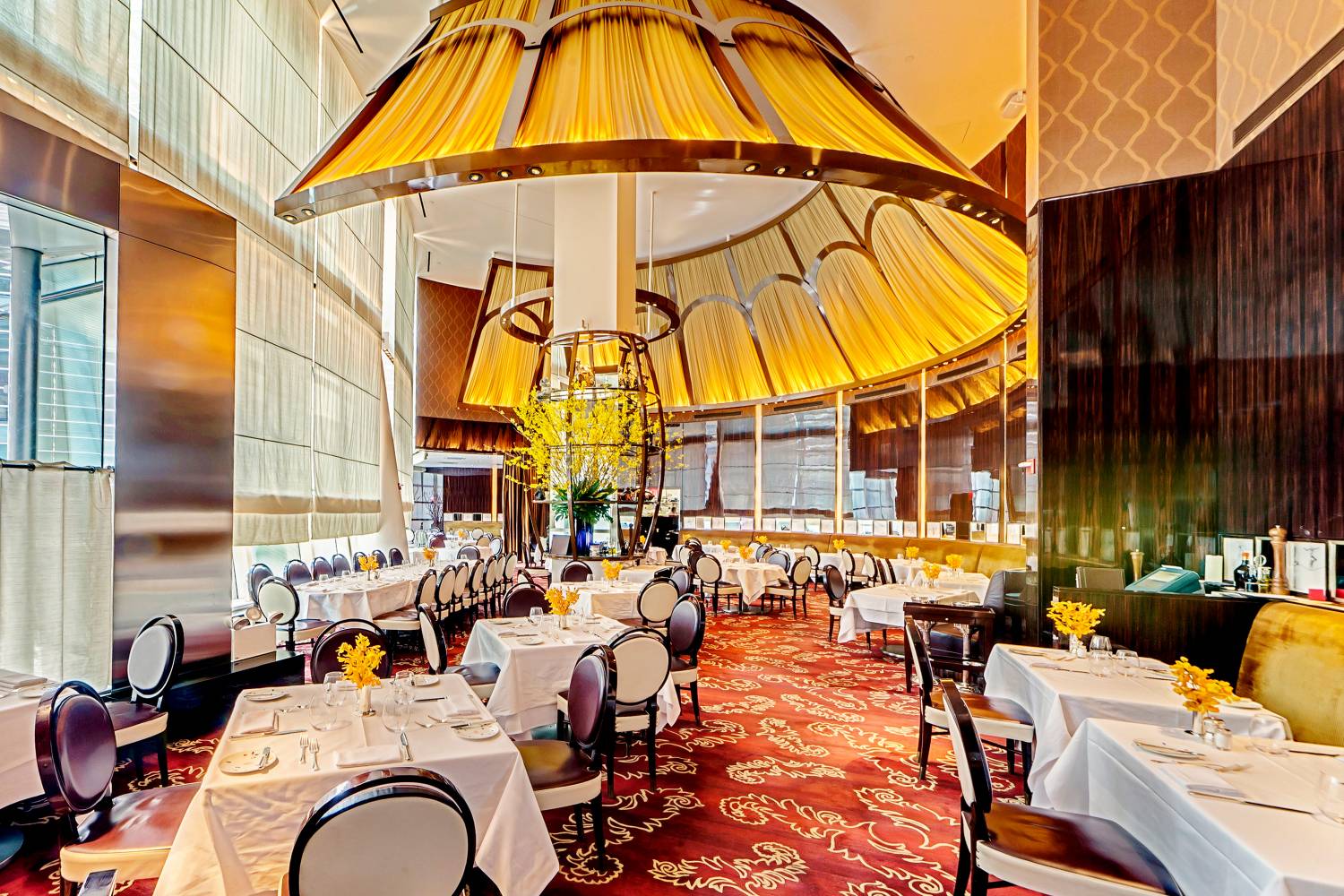 waiter
who thinks that just because a rich person smiles
at you, you are set for life. Usually, it’s the
opposite. They use you when they need you and then
don’t remember you when you have a problem.” Every
great chef and restaurateur who came to NYC headed
straight to Le Cirque--Paul Bocuse, Roger Vergé,
Alan Ducasse, Ella Brennan, Tony Vallone, Piero
Selvaggio, and the great winemakers like Piero
Antinori and Angelo Gaja.
waiter
who thinks that just because a rich person smiles
at you, you are set for life. Usually, it’s the
opposite. They use you when they need you and then
don’t remember you when you have a problem.” Every
great chef and restaurateur who came to NYC headed
straight to Le Cirque--Paul Bocuse, Roger Vergé,
Alan Ducasse, Ella Brennan, Tony Vallone, Piero
Selvaggio, and the great winemakers like Piero
Antinori and Angelo Gaja.
Le Cirque has changed locations
twice now: moving from its original location on
East 65th Street to the Palace Hotel on Madison
Avenue and then to the just-closed East 58th
Street site (right).
Each restaurant had a radically different décor,
the last two designed by AdamTihany. Le Cirque has
never been the stultified, dated place its
detractors sniffed that it was. Neither was it the
most expensive restaurant in NYC by a long shot; à la
carte was always available, in addition to an
amazing $98 four-course menu.
True, over the past few years
Le Cirque’s culinary clout lessened and critics
have not been kind, as chefs came and left after
short tenures.
And some of its former clientele did not
feel at home in the vast space of its last
location. Last, and most important, Sirio Maccioni
himself grew older and unable to be present in his
restaurant every night of the week, though his
sons, Mario, Marco and Mauro, kept the Maccioni
personality impressed upon the dining room. Today
Marco is largely the face of Le Cirque (Mario has
retired and Mauro spends much of his time
overseeing the family’s international branches,
which include restaurants in Abu Dhabi, Dubai, New
Delhi and Mumbai).
Over the years Le Cirque’s once
extensive menu had grow somewhat smaller and more
Italian dishes entered it—the famous pasta alla
primavera, created on a whim by Sirio in the
1970s, has never actually been listed on the
menu—and signature items like “Black Tie
Scallops,” flounder Le Cirque and crème brûlée
have never left it.
The wine list is still one of the finest in
America.
So
another page is turned by Le Cirque and a new
chapter is about to begin. I,
among many, believe it will be a very exciting
continuance of the story, with drama and comedy,
glamour and excitement, good taste and fine
manners.
By John Mariani
30 Lincoln Center Plaza
212-799-3400

When
I went for Sunday brunch recently at The
Grand Tier Restaurant, set atop a grand
staircase at the Metropolitan Opera, and I
looked around at the gleaming, beautifully
restored Lincoln Center campus, I sighed
for the thousandth time at just how
wondrous New York City truly is.
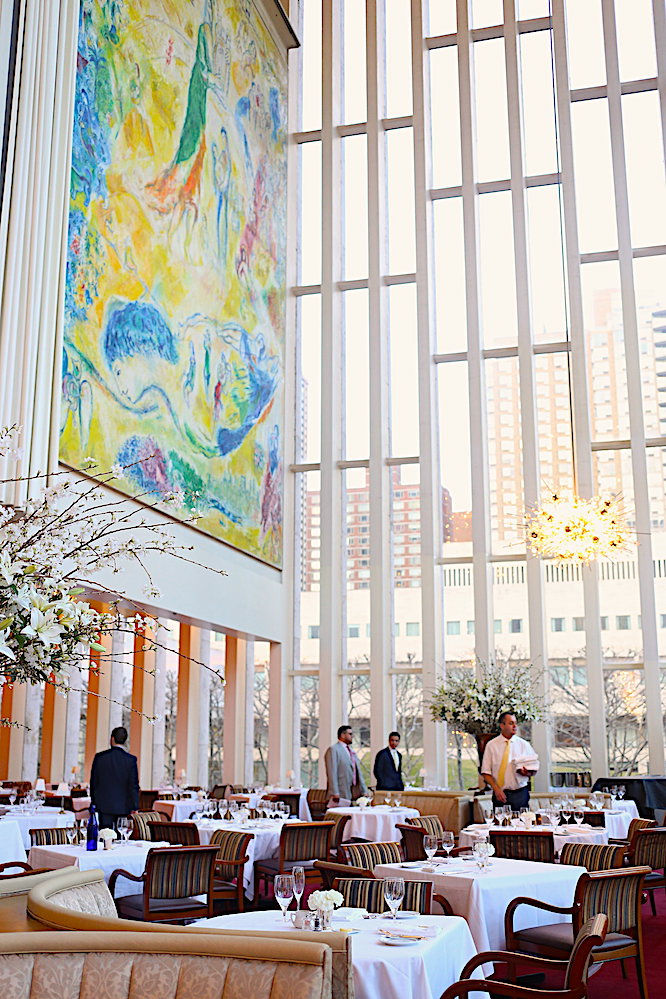 Below us our panorama
on the plaza
widened to include the Henry Moore sculpture set
in a pool of water, the dramatic wedge of glass
that houses Lincoln Ristorante, the Juilliard
School of Music and the array of theaters within
the Center.
Beyond that is brash Broadway, always
streaming and teeming with people and cars,
taxis and buses in both directions. No
matter how many times I experience such a New
York moment, I am always reminded of Little
Orphan Annie singing, “To think that I've lived
here all of my life and never seen these
things!”
Below us our panorama
on the plaza
widened to include the Henry Moore sculpture set
in a pool of water, the dramatic wedge of glass
that houses Lincoln Ristorante, the Juilliard
School of Music and the array of theaters within
the Center.
Beyond that is brash Broadway, always
streaming and teeming with people and cars,
taxis and buses in both directions. No
matter how many times I experience such a New
York moment, I am always reminded of Little
Orphan Annie singing, “To think that I've lived
here all of my life and never seen these
things!”
The vast space of The
Grand Tier, beneath gleaming chandeliers, is in
itself an astonishment, flanked on either side
by Marc Chagall murals—“The Triumph of Music”
and “The Sources of Music.” (One of the Met’s
secrets is that the paintings were mistakenly installed
opposite of the way Chagall intended them, but
the artist eventually decided the mistake was
a good one, because the trumpet players in
each painting now face each other, as if
welcoming visitors with a fanfare.)
The restaurant’s
tables are widely spaced, the linens glow in the
noontime sunshine, the flowers flourish, and on
Sundays a singer from the Met ‘s Lindemann Young
Artists Development Program comes to serenade
diners. On
the Sunday I went it was an extraordinary basso named
David
Leigh, whose un-amplified renditions of Verdi,
Mussorgsky and Cole Porter boomed through the
huge dining room to a chorus of bravos.
The Grand
Tier is unique beyond its décor. Pre-opera, it
serves dinner ($74 prix fixe or à la carte),
though you need not be attending a performance
to dine there. To save time, you can even
pre-order cocktails and food before the
performance. Two hours before the curtain goes
up, guests sit down to a two-course meal, then,
during the opera’s half-hour intermission, they
return to their table, where dessert is waiting
for them.
After 8 p.m., the restaurant functions as
does any other, depending on the tables
available.
There is also a
Saturday matinee menu, at $48. At Sunday brunch
($45 prix fixe or à la carte) guests also have
free access to Gallery Met, which presents
contemporary art exhibitions on operatic themes.
The Revlon Bar at The Grand Tier offers a full
beverage selection, including a Champagne and
Prosecco Bar, and signature sandwiches and
desserts.
Executive Chef Richard Diamonte, who
previously was with Jean-Georges, offers an
extensive brunch—not a pre-made buffet—and you
get “Endless Grand Tier Bellinis.” The menu
mimics the one at dinner to some degree, so by
all means have the crab cake with a rich lobster
beurre blanc, celery root rémoulade avocado
mousse and citrus ($22). The
wild mushroom 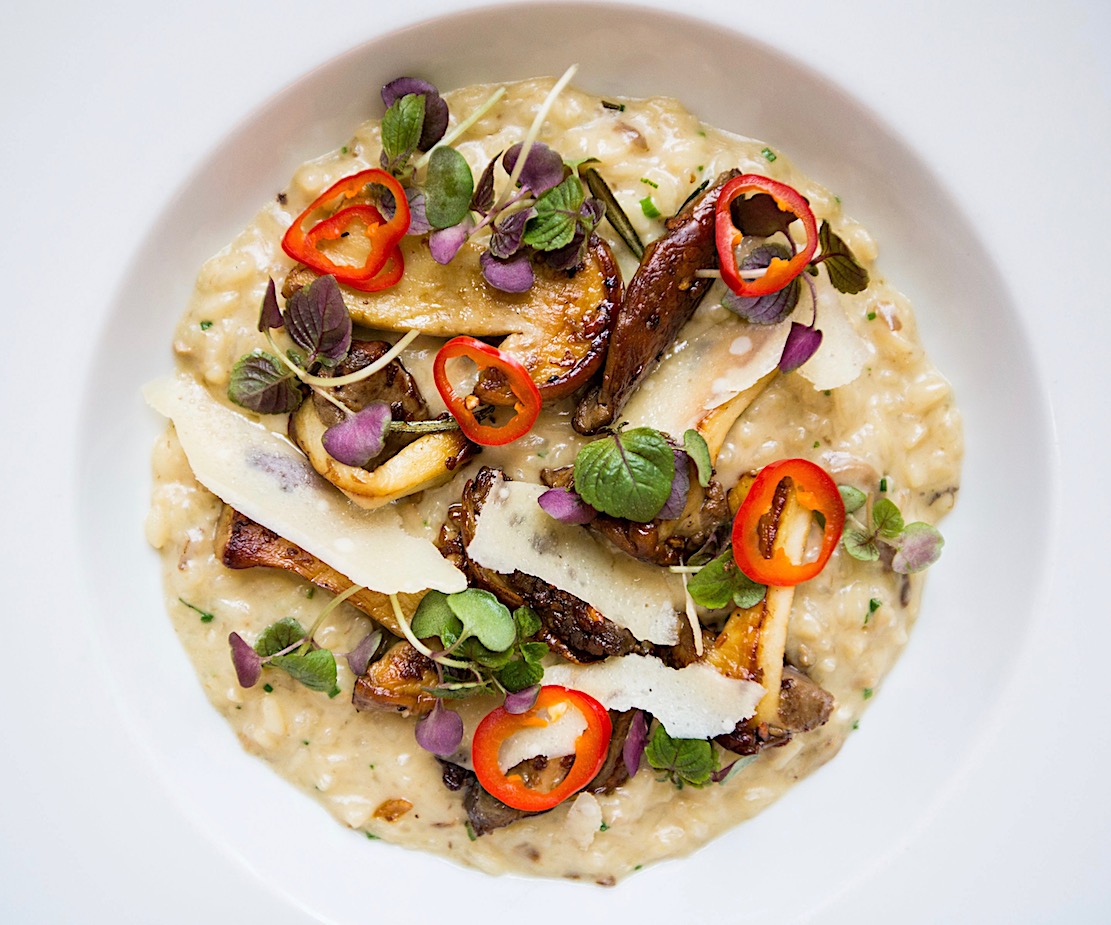 risotto
($28) is excellent, tender and melded with
truffle butter, while Benedict Royale ($25) is
one of the most sumptuous versions in the city,
layered with
Niman Ranch jamon
royal and Gruyère atop cornbread, all of
it lavished with an impeccable Hollandaise sauce
and accompanied by roasted potatoes.
risotto
($28) is excellent, tender and melded with
truffle butter, while Benedict Royale ($25) is
one of the most sumptuous versions in the city,
layered with
Niman Ranch jamon
royal and Gruyère atop cornbread, all of
it lavished with an impeccable Hollandaise sauce
and accompanied by roasted potatoes.
The dinner menu has
some unusual items, like a velouté of sweet
cardoons with toasted almonds, persimmons,
celery root and chervil ($22) and veal
tenderloin with roasted squash, caramelized
gnocchi, Parmesan, pancetta and sage ($48).
There are also five cheeses available. And
to finish, there’s a fine rendering of an often
mis-rendered dessert, baked Alaska ($16), and a
Valrhona chocolate soufflé with crème anglaise
($18), perfect for two people. A dense chocolate
mousse cake ($16) comes with a praline glaze and
hazelnut cream, while a delightful torrone
maringue parfait ($16) is a lovely dessert atop
a pistachio cake lavished with a rich zabaglione
foam, sour cherries and poached figs.
The wine list is
formidable and well-balanced, not least for the
number of Champagnes carried, and it is not
unusual to see an icy bucket of bubbly on most
tables every night.
Dining at The Grand
Tier has become such a ritual for so many guests
that they return as regularly as churchgoers
each week, and now, with Sunday brunch, that is
even more the case.
Lincoln
Center, like the Metropolitan Museum of Art
Grand Central Terminal and Rockefeller Center,
is a quintessential part of NYC’s cultural
landscape, and The Grand Tier is a very special
place right in the midst of all in which to
savor its delicious glory.
❖❖❖
AT CHÂTEAU LATOUR
By John Mariani
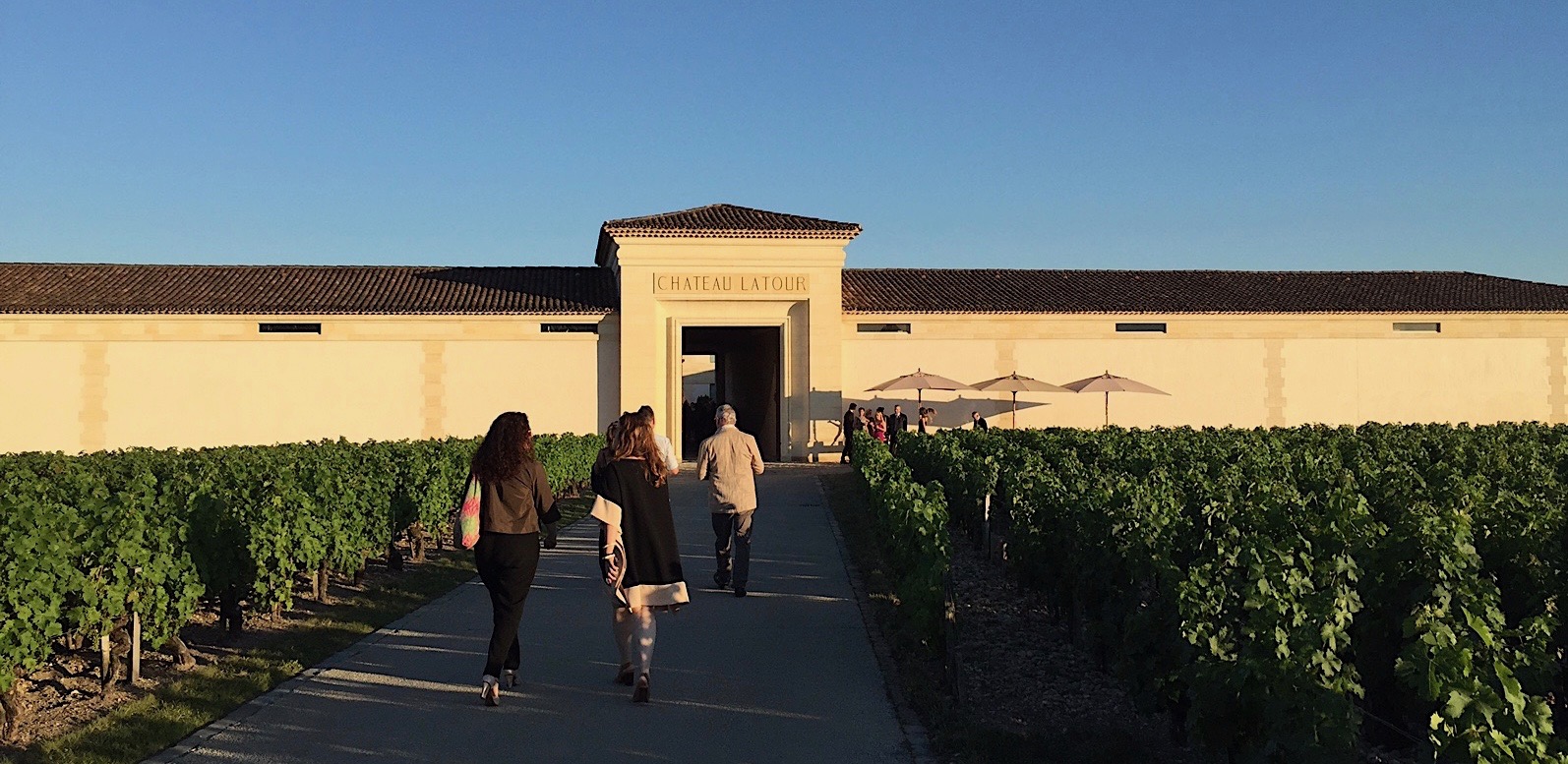
Invitations to dinner at the illustrious Château Latour in Pauillac do not come along often, so my acceptance was immediate and my anticipation heightened by the added incentive that an array of great Bordeaux was to accompany a menu created by master chef Michel Guérard.
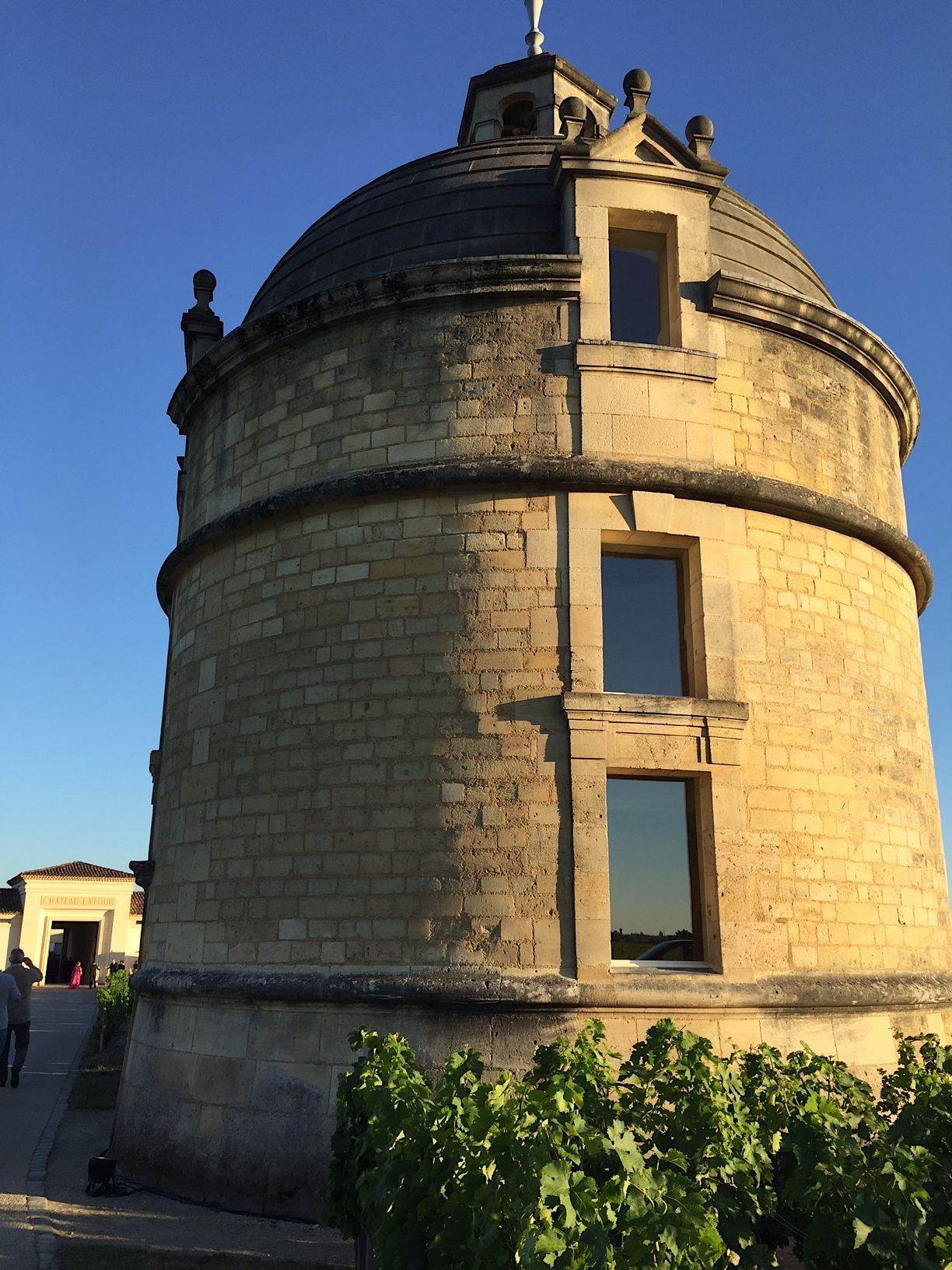 Château Latour is, of
course, one of the Premiers Crus of Bordeaux and
has been since the Classification of 1855 that
ranked the various wines of the region in
quality categories. The château itself dates
to 1331, and the tower (left) that gives Latour
its name to1453, although
Château Latour is, of
course, one of the Premiers Crus of Bordeaux and
has been since the Classification of 1855 that
ranked the various wines of the region in
quality categories. The château itself dates
to 1331, and the tower (left) that gives Latour
its name to1453, although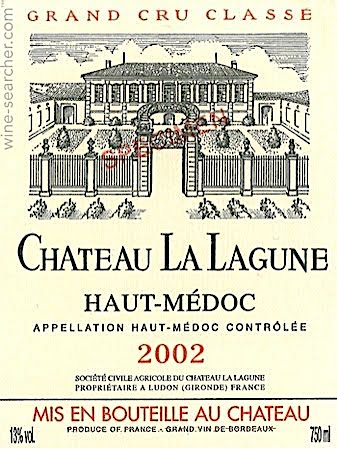 that
one was destroyed during the Hundred Years’ War,
replaced by the current one (actually built as a
pigeon roost) in the 1620s.
that
one was destroyed during the Hundred Years’ War,
replaced by the current one (actually built as a
pigeon roost) in the 1620s.
Uninterrupted ownership by the Ségur family ended only in 1963, when the estate was acquired by the British Pearson Group, then in 1989 sold to the international corporation Allied-Lyons, which in turn sold it to Francois Pinault in 1993 at a value of £86 million, which seems like a steal now. Today Latour produces about 300,000 bottles (25,000 case)s of its three wines (the second, Les Forts de Latour, the third sold as Pauillac), set on 93 hectares on the Left Bank of the Gironde River and modernizing the château in the current century.
The dinner at the estate, attended by about 400 people, most from within the wine community but with a good number of celebrities and French politicians, also offered a tasting of the Grand Crus of Sauternes and Barsac from 2012 to 2014. What was so remarkable was the timing of the meal, which took place last June, by a service staff and kitchen that turned out superb French cuisine with military timing, plates put down with dispatch and removed when everyone was terminé. Within minutes the next course arrived, accompanied at the same moment by sommeliers pouring the wines, all at the perfect temperature.
The meal began with potatoes cooked in parchment paper and ennobled by caviar, accompanied by Château Haut-Brion Blanc 2009 in magnum, which showed wonderful structure and that identifying clay and limestone of the terroir. For the next course, morel mushrooms and local asparagus atop a pillow of mushroom foam, each table received a different Grand Cru of Médoc, in the case of our table, Brane-Cantenac 2009, a Second Growth in Margaux that was very sophisticated and a true expression of everything Bordeaux manifests in its balance of fruit, acid and soft tannins.
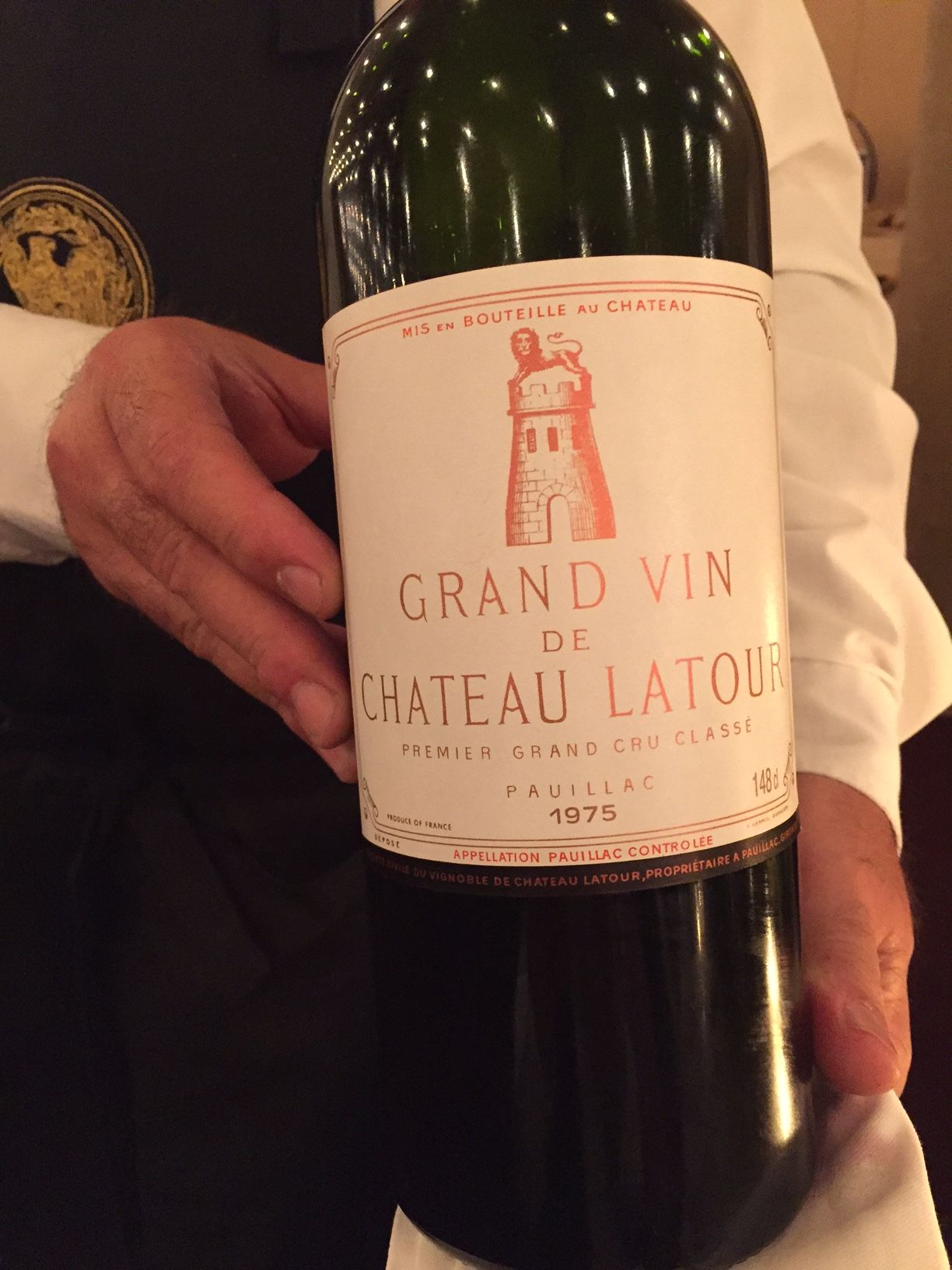 The
next course was a tart of chicken with foie gras
and wild cabbage, with which we enjoyed a 1982
vintage of Château La Lagune
The
next course was a tart of chicken with foie gras
and wild cabbage, with which we enjoyed a 1982
vintage of Château La Lagune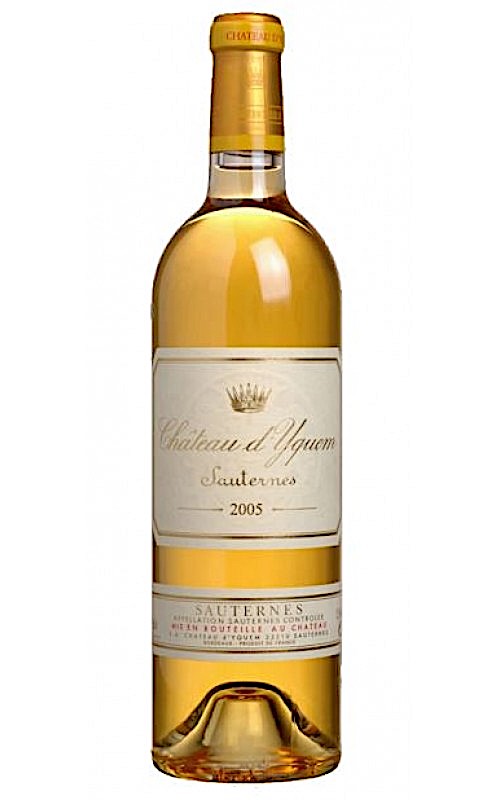 (Third
Growth), owned by the Frey family and run by
Caroline Frey. It had a lush, blossoming
bouquet, softened tannins and a velvety texture
that comes from 30 percent Merlot.
(Third
Growth), owned by the Frey family and run by
Caroline Frey. It had a lush, blossoming
bouquet, softened tannins and a velvety texture
that comes from 30 percent Merlot.
Curiously enough, the host wine of the evening, Château Latour, served its 1975 in magnum with a cheese course of Brie de Meaux and truffles. Not out of the ordinary, but I find that dry red wines, though often served with cheese, do not show as well with examples as rich as Brie de Meaux, which I would have preferred with the Haut-Brion Blanc 2009. Nevertheless, the wine showed astonishing freshness for one so old, peppery still, its fruit emerging beneath the tannins, with a very long, satisfying finish.
But, for me, the best was yet to come. A dessert of mascarpone with a confit of apricots and scented with verveine was accompanied by a Château d’Yquem 2005, as perfect as any wine I’ve ever had. The distinguishing mark of Yquem has always been the backbone of botrytis and oak behind the intensity of sweetness from a blend of 80 percent Semillon and 20 percent Sauvignon Blanc. It proved again why it is considered one of the greatest wines in the world.
There
are evenings you remember and then there are
evenings you never forget. This grand assemblage
at Château Latour, where the sun set late and
the event ended with a spectacle of fireworks,
was one where I learned as
much as I reveled in the glamour of it all.
Buoyed by the food, the wine and the company, I
knew that everything I have always found unique
about France was on full display that warm June
night in Bordeaux.
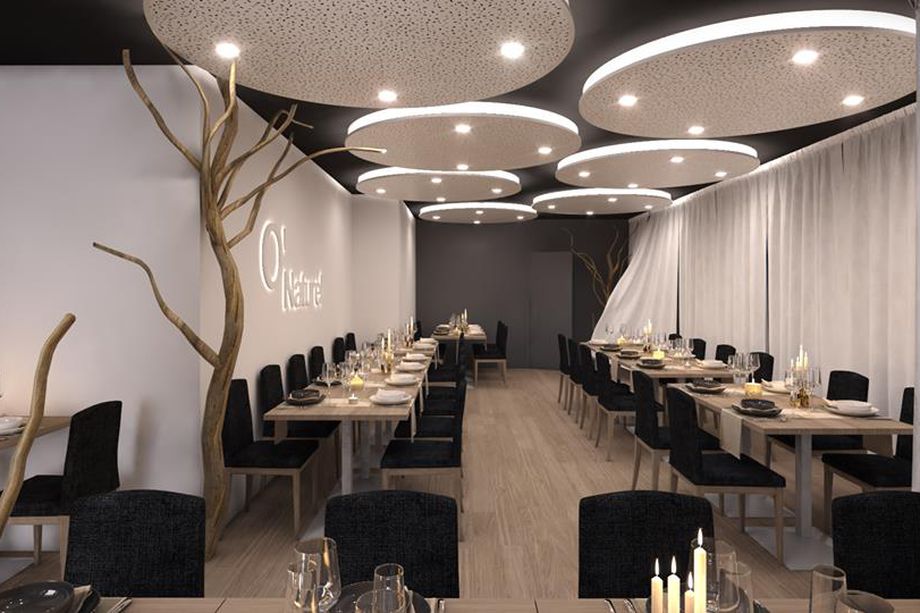
KIDS' PIZZA
PARTIES
WILL BEGIN SOON
In
Paris, O’naturel (left),
founded by twin brothers Mike and Stéphane Saada, is the
city's first nudist restaurants. The restaurant debuted
with members of the the Association des Naturistes de
Paris. The owners have outfitted the restaurant windows
and entryway with thick blackout curtains to ensure
customers’ privacy. The restaurant also has a cloakroom
where customers can shed their clothes before sitting
down to dinner.

“[Julia Child’s] touching depiction of
their pleasure driven creative collaboration makes it
clear that in Paul Julia had found the lid to her
6-feet-2-inch pot.”—Christine Muhlke, “Francophiles,” NY Time Book Review (Dec.
3, 2017).
Wine
Column Sponsored by Banfi Vintners
SANGIOVESE-- THE GREAT RED WINE GRAPE FOR
WINTER
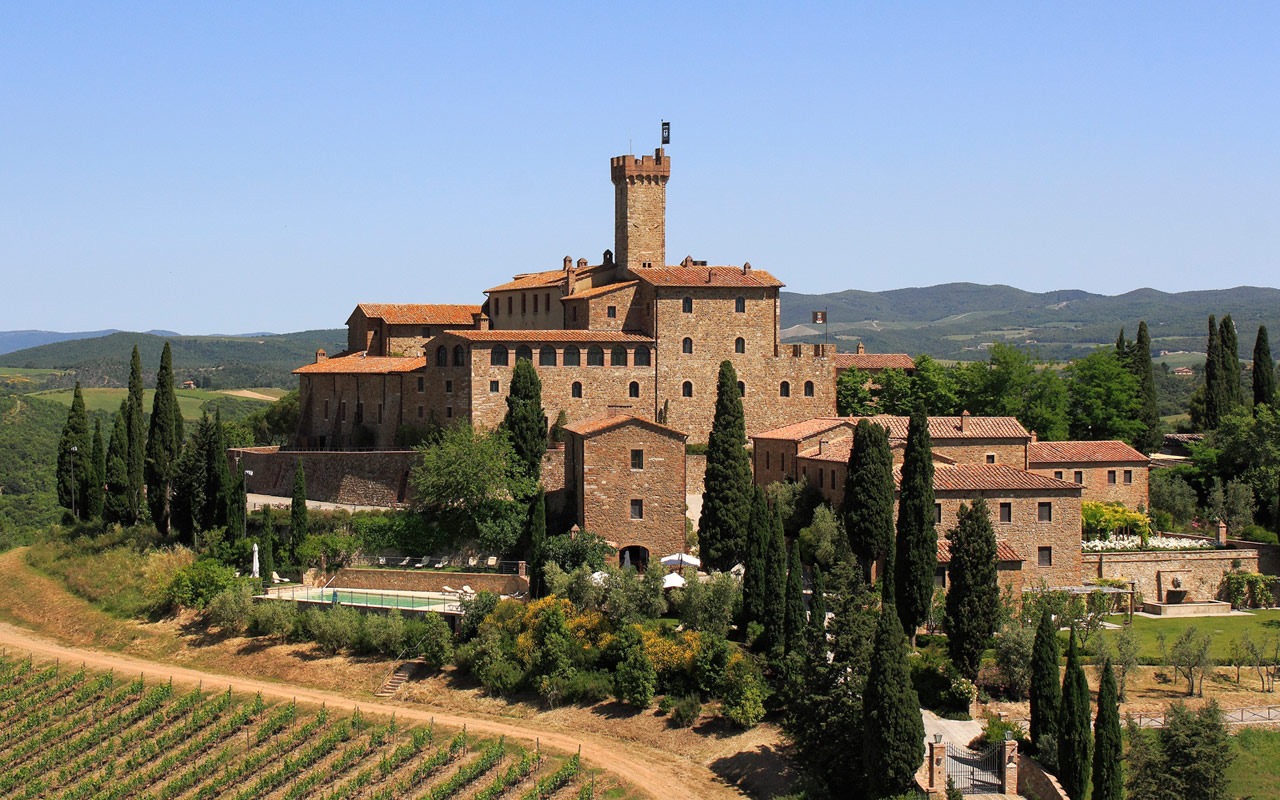
Cooler weather here
means it is time to start enjoying more red wines
and especially Sangiovese based wines. That
includes Banfi’s cru of Brunello, Poggio alle Mura,
literally the cream of the crop of our Sangiovese
vineyards. Alongside our Poggio alle Mura Brunello
di Montalcino, this year we introduced two more
wines from the cru Poggio alle Mura – a Rosso di
Montalcino and a Riserva of Brunello. Rosso is
sort of like the younger brother of Brunello, also
made from 100% Sangiovese grapes but usually a
selection from younger vines and the wine is aged
only two years compared to the four required for
Brunello. The
Riserva, on the other hand, is an even more
selective harvest of Sangiovese, and ages for an
additional year before release.
What is so special
about this cru Poggio alle Mura? Well, it
is the result our over 30 years of ongoing research
at my family’s vineyard estate, Castello Banfi. When we
first began planting our vines there in the late
1970s studies from the University of Bordeaux
indicated which strains of many varietals we should
plant, based on the soil type and microclimate of
each vineyard.
But when it came to the region’s native
Sangiovese, there was only local lore, no scientific
research. So
we took it upon ourselves to figure out this vine,
and set off on three decades of incredibly detailed
research.
We started with 600
apparent variations on Sangiovese, because it is so
susceptible to variations in weather and soil, and
narrowed that down to 160 truly genetically
different clones.
We planted a vineyard with two rows of each
type, made wine from each of them, and charted the
differences – remember, you only get one chance a
year to make wine, so this took time.
It took about ten
years to get some concrete results, though we
continue to experiment today and always will – you
never stop learning in science and nature! 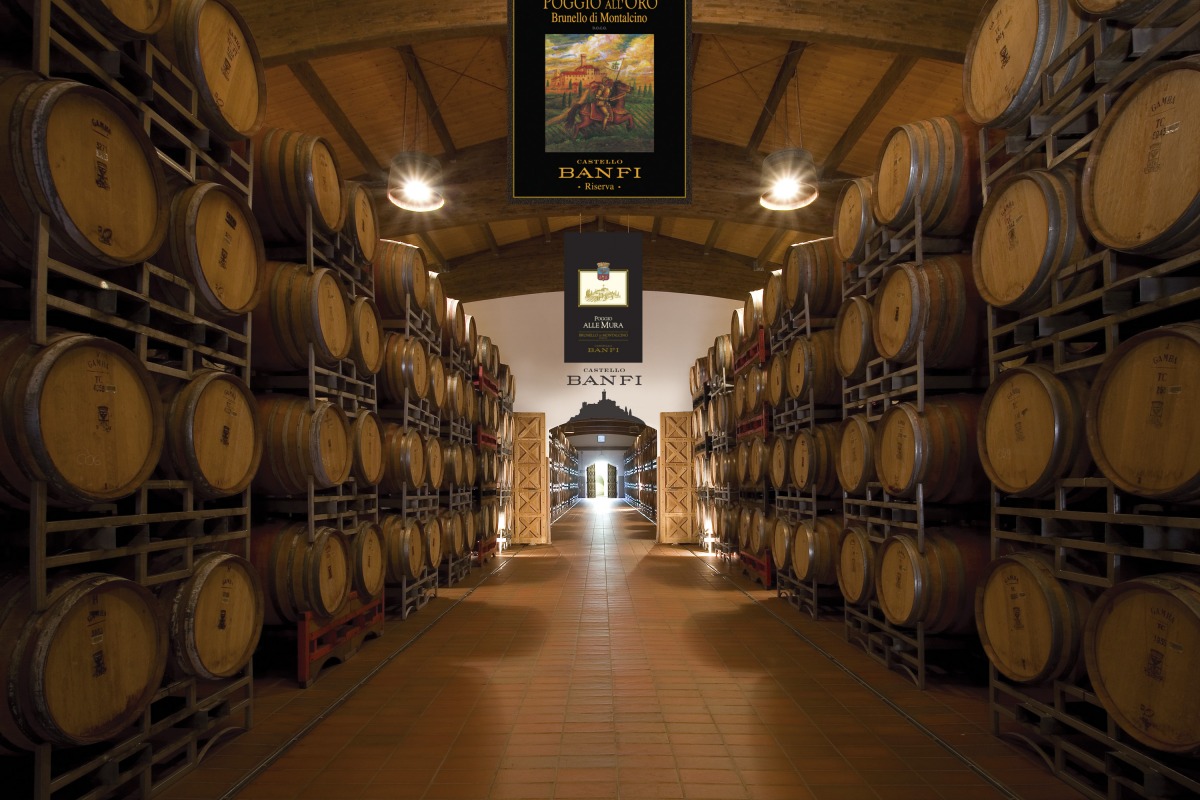 Once
we determined which were the best, complementary
clones that could be planted together to make the
best Brunello, we chose to plant them in what we
determined to be the optimal vineyard sites. Coincidentally,
the best soils and climate conditions are in the
slopes surrounding the medieval fortress today known
as Castello Banfi, known since Etruscan times as
Poggio alle Mura – the walled hilltop. Hence the
name of our most special “cru” of Brunello,
representing a synthesis between tradition and
innovation.
Once
we determined which were the best, complementary
clones that could be planted together to make the
best Brunello, we chose to plant them in what we
determined to be the optimal vineyard sites. Coincidentally,
the best soils and climate conditions are in the
slopes surrounding the medieval fortress today known
as Castello Banfi, known since Etruscan times as
Poggio alle Mura – the walled hilltop. Hence the
name of our most special “cru” of Brunello,
representing a synthesis between tradition and
innovation.
Though the focus of
this study was our Brunello, all of our
Sangiovese-based wines, including the super Tuscans
SummuS, Cum Laude, and Centine, benefitted from this
work. And
that’s the third reason for celebrating Sangiovese
this month, for the range of wonderful reds that
usher us into autumn!
One wine in particular was inspired by our
research – the BelnerO, a Sangiovese dominant blend
with what I like to call a kiss of Cabernet and a
whisper of Merlot.
We grow the grapes a little differently for
BelnerO than for Brunello, make the wine with less
oak aging and released it earlier from the winery,
providing a counterpoint to Brunello and a lovely
terroir-driven wine in its own right.
If you
know Italians, you know that by nature we are
multi-faceted, varying in mood, and always
passionate. As
a nation, we span from the hot sunny beaches of
Sicily near the African coast to the rugged
mountains and Alpine ski slopes of Trentino-Alto
Adige in the north.
Sangiovese is grown in almost all of Italy’s
regions and reflects the unique nature of each; it
is most famous (rightfully so) in Tuscany, yet even
there it reflects the nuances of each hilltop,
valley and subzone.
It has something a little different to say in
Brunello than Chianti, Morellino than Vino Nobile di
Montepulciano, Rosso di Montalcino than Super Tuscan
blends.
Here is a smattering
of Sangiovese-based wines that you may wish to get
to know better, reflecting a spectrum that appeals
to every occasion, every taste, and every budget. We can
assure you that the conversation will never become
boring.
Recommendations for Celebrating
Sangiovese
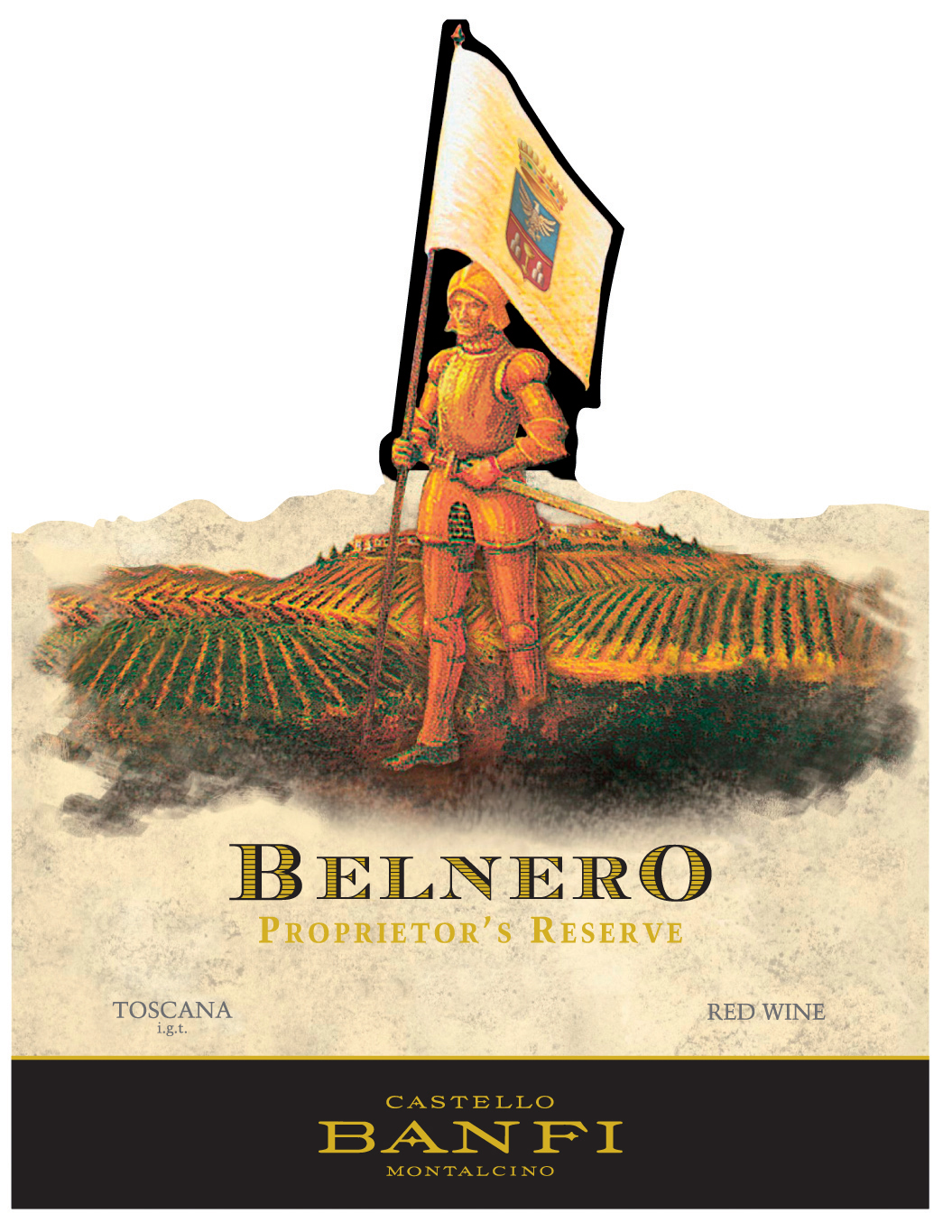 BelnerO
Proprietor’s Reserve Sangiovese – A refined
cuvée of noble red grapes perfected by our
pioneering clonal research. This dark beauty,
BelnerO, is produced at our innovative winery,
chosen 11 consecutive years as Italy’s Premier
Vineyard Estate. Fermented in our patented
temperature controlled French oak and aged
approximately 2 additional years. Unfiltered, and
Nitrogen bottled to minimize sulfites.
BelnerO
Proprietor’s Reserve Sangiovese – A refined
cuvée of noble red grapes perfected by our
pioneering clonal research. This dark beauty,
BelnerO, is produced at our innovative winery,
chosen 11 consecutive years as Italy’s Premier
Vineyard Estate. Fermented in our patented
temperature controlled French oak and aged
approximately 2 additional years. Unfiltered, and
Nitrogen bottled to minimize sulfites.
Castello Banfi Brunello di
Montalcino – Rich, round, velvety and intensely
aromatic, with flavor hints of licorice, cherry, and
spices. Brunello di Montalcino possesses an intense
ruby-red color, and a depth, complexity and opulence
that is softened by an elegant, lingering
aftertaste. Unfiltered after 1998 vintage.
Castello Banfi Rosso di
Montalcino – Brunello's "younger brother," produced
from select Sangiovese grapes and aged in barrique
for 10 to 12 months. Deep ruby-red, elegant,
vibrant, well-balanced and stylish with a dry
velvety finish.
Poggio all’Oro Brunello di
Montalcino Riserva – A single vineyard selection of our most
historically outstanding Sangiovese, aged five years
before release, the additional year more than that
required of Brunello including 6 months in barrel
and 6 months more in bottle to grant its “Riserva”
designation. Incredible
elegance and harmony. Intense with lots of fruit and
subtle wood influence. Round, complete, well balanced with hints
of chocolate and berries. Unfiltered after 1998.
well balanced with hints
of chocolate and berries. Unfiltered after 1998.
Poggio alle Mura – The first tangible result of years of
intensive clonal research on Montalcino’s native
Sangiovese grape.
Estate bottled from the splendidly sun
drenched vineyards surrounding the medieval Castello
from which it takes its name. The Brunello di
Montalcino is seductive, silky and smoky. Deep ruby
in color with an expressive bouquet of violets,
fruits and berries as well as cigar box, cedar and
exotic spices. The Rosso di
Montalcino is also intense ruby red. The
bouquet is fresh and fruity with typical varietal
notes of cherry and blackberry, enriched by more
complex hints of licorice, tobacco and hazelnut. It is
full bodied, yet with a soft structure, and a
surprisingly long finish. The Poggio alle
Mura Brunello di Montalcino Riserva is deep
ruby red with garnet reflections and a rich, ample
bouquet that hints of prune jam, coffee, cacao and a
light balsamic note.
It is full and powerful, with ripe and gentle
tannins that make it velvety and harmonious; this
wine is supported by a pleasing minerality that to
me speaks soundly of that special hillside in
southern Montalcino.
SummuS – A wine of towering elegance, SummuS is
an extraordinary blend of Sangiovese which
contributes body; Cabernet Sauvignon for fruit and
structure; and Syrah for elegance, character and a
fruity bouquet.
An elegant, complex and harmonious red
wine.
Cum Laude – A complex and elegant red which
graduated “With Honors,” characterized by aromas of
juicy berries and fresh spices.
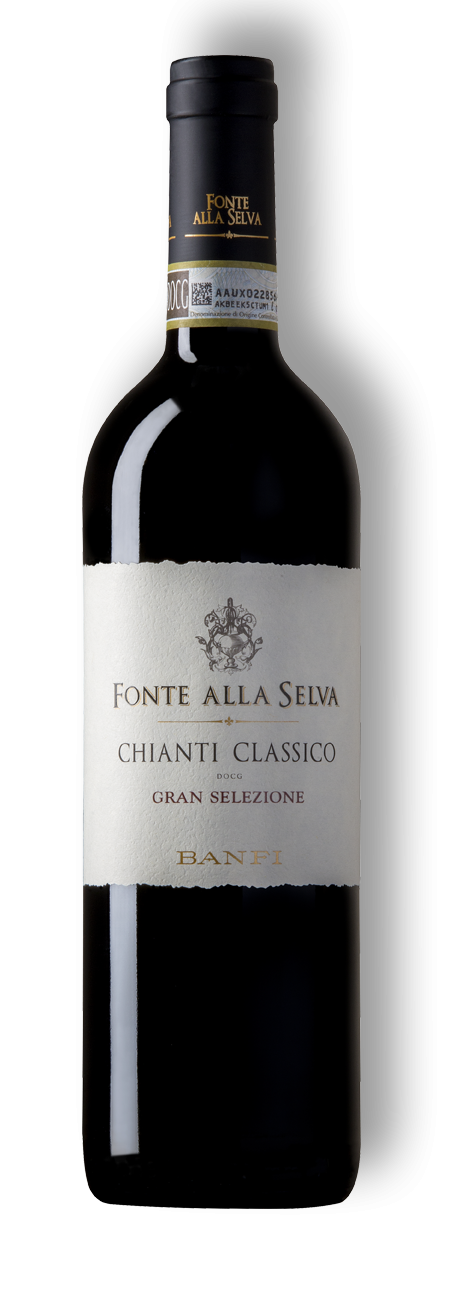 Centine – A Cuvee that is more than half
Sangiovese, the balanced consisting of equal parts
of Cabernet Sauvignon and Merlot. Vinified
in a firm, round style that easily accompanies a
wide range of dishes, this is a smooth and
fragrantly satisfying wine with international
character, and a perennial favorite at my own dinner
table.
Centine – A Cuvee that is more than half
Sangiovese, the balanced consisting of equal parts
of Cabernet Sauvignon and Merlot. Vinified
in a firm, round style that easily accompanies a
wide range of dishes, this is a smooth and
fragrantly satisfying wine with international
character, and a perennial favorite at my own dinner
table.
Banfi Chianti Superiore – The “Superiore” designation signifies
stricter government regulations regarding production
and aging requirements, as compared to regular
Chianti. An
intense ruby red wine with fruit forward aromas and
floral notes.
This is a round wine with well-balanced
acidity and fruit.
Banfi Chianti Classico – An enduring classic: alluring
bouquet of black fruit and violets; rich flavors of
cherry and leather; supple tannins and good acidity
for dining.
Banfi Chianti Classico Riserva –
Produced from select grapes grown
in the "Classico" region of Chianti, this dry,
fruity and well-balanced red has a full bouquet
reminiscent of violets.
Fonte alla Selva Chianti Classico
– This is our newest entry into the
Chianti arena, coming from a 99 acre estate in
Castellina, the heart of the Chianti Classico
region. The
wine is a captivating mauve red that smells of
cherry, plum and blackberry with hints of spice. It is
round, full and balanced with very good
acidity.
Col di Sasso – Sangiovese and Cabernet Sauvignon. Luscious,
complex and soft with persistent notes of fruit and
great Italian style structure.
Any of John Mariani's books below may be ordered from amazon.com.
 The Hound in Heaven
(21st Century Lion Books) is a novella, and
for anyone who loves dogs, Christmas, romance,
inspiration, even the supernatural, I hope you'll find
this to be a treasured favorite. The story
concerns how, after a New England teacher, his wife and
their two daughters adopt a stray puppy found in their
barn in northern Maine, their lives seem full of promise.
But when tragedy strikes, their wonderful dog Lazarus and
the spirit of Christmas are the only things that may bring
his master back from the edge of despair.
The Hound in Heaven
(21st Century Lion Books) is a novella, and
for anyone who loves dogs, Christmas, romance,
inspiration, even the supernatural, I hope you'll find
this to be a treasured favorite. The story
concerns how, after a New England teacher, his wife and
their two daughters adopt a stray puppy found in their
barn in northern Maine, their lives seem full of promise.
But when tragedy strikes, their wonderful dog Lazarus and
the spirit of Christmas are the only things that may bring
his master back from the edge of despair. WATCH THE VIDEO!
“What a huge surprise turn this story took! I was completely stunned! I truly enjoyed this book and its message.” – Actress Ali MacGraw
“He had me at Page One. The amount of heart, human insight, soul searching, and deft literary strength that John Mariani pours into this airtight novella is vertigo-inducing. Perhaps ‘wow’ would be the best comment.” – James Dalessandro, author of Bohemian Heart and 1906.
“John Mariani’s Hound in Heaven starts with a well-painted portrayal of an American family, along with the requisite dog. A surprise event flips the action of the novel and captures us for a voyage leading to a hopeful and heart-warming message. A page turning, one sitting read, it’s the perfect antidote for the winter and promotion of holiday celebration.” – Ann Pearlman, author of The Christmas Cookie Club and A Gift for my Sister.
“John Mariani’s concise, achingly beautiful novella pulls a literary rabbit out of a hat – a mash-up of the cosmic and the intimate, the tragic and the heart-warming – a Christmas tale for all ages, and all faiths. Read it to your children, read it to yourself… but read it. Early and often. Highly recommended.” – Jay Bonansinga, New York Times bestselling author of Pinkerton’s War, The Sinking of The Eastland, and The Walking Dead: The Road To Woodbury.
“Amazing things happen when you open your heart to an animal. The Hound in Heaven delivers a powerful story of healing that is forged in the spiritual relationship between a man and his best friend. The book brings a message of hope that can enrich our images of family, love, and loss.” – Dr. Barbara Royal, author of The Royal Treatment.
 |
The Encyclopedia of American Food and Drink by John F. Mariani (Bloomsbury USA, $35) Modesty forbids me to praise my own new book, but let me proudly say that it is an extensive revision of the 4th edition that appeared more than a decade ago, before locavores, molecular cuisine, modernist cuisine, the Food Network and so much more, now included. Word origins have been completely updated, as have per capita consumption and production stats. Most important, for the first time since publication in the 1980s, the book includes more than 100 biographies of Americans who have changed the way we cook, eat and drink -- from Fannie Farmer and Julia Child to Robert Mondavi and Thomas Keller. "This book is amazing! It has entries for everything from `abalone' to `zwieback,' plus more than 500 recipes for classic American dishes and drinks."--Devra First, The Boston Globe. "Much needed in any kitchen library."--Bon Appetit. |
"Eating Italian will never be the same after reading John Mariani's entertaining and savory gastronomical history of the cuisine of Italy and how it won over appetites worldwide. . . . This book is such a tasteful narrative that it will literally make you hungry for Italian food and arouse your appetite for gastronomical history."--Don Oldenburg, USA Today. "Italian
restaurants--some good, some glitzy--far
outnumber their French rivals. Many of
these establishments are zestfully described
in How Italian Food Conquered the World, an
entertaining and fact-filled chronicle by
food-and-wine correspondent John F.
Mariani."--Aram Bakshian Jr., Wall Street
Journal.
"Equal parts
history, sociology, gastronomy, and just
plain fun, How Italian Food Conquered the
World tells the captivating and delicious
story of the (let's face it) everybody's
favorite cuisine with clarity, verve and
more than one surprise."--Colman Andrews,
editorial director of The Daily
Meal.com. "A fantastic and fascinating
read, covering everything from the influence
of Venice's spice trade to the impact of
Italian immigrants in America and the
evolution of alta cucina. This book will
serve as a terrific resource to anyone
interested in the real story of Italian
food."--Mary Ann Esposito, host of PBS-TV's
Ciao
Italia. "John Mariani has written the
definitive history of how Italians won their
way into our hearts, minds, and
stomachs. It's a story of pleasure over
pomp and taste over technique."--Danny Meyer,
owner of NYC restaurants Union Square
Cafe, The Modern, and Maialino.
|
 |
 |
 |
 |
 |
 |
 |
 |
 Everett Potter's Travel Report:
Everett Potter's Travel Report: 
 Eating Las Vegas
JOHN CURTAS has been covering the Las Vegas
food and restaurant scene since 1995. He is
the co-author of EATING LAS VEGAS – The 50
Essential Restaurants (as well as
the author of the Eating Las Vegas web site: www.eatinglasvegas.
He can also be seen every Friday morning as
the “resident foodie” for Wake Up With the
Wagners on KSNV TV (NBC) Channel 3 in
Las Vegas.
Eating Las Vegas
JOHN CURTAS has been covering the Las Vegas
food and restaurant scene since 1995. He is
the co-author of EATING LAS VEGAS – The 50
Essential Restaurants (as well as
the author of the Eating Las Vegas web site: www.eatinglasvegas.
He can also be seen every Friday morning as
the “resident foodie” for Wake Up With the
Wagners on KSNV TV (NBC) Channel 3 in
Las Vegas.

MARIANI'S VIRTUAL GOURMET
NEWSLETTER is published weekly. Editor/Publisher: John
Mariani.
Editor: Walter Bagley. Contributing Writers: Christopher Mariani,
Robert Mariani, Misha Mariani, John A. Curtas, Geoff Kalish, Mort
Hochstein, and
Brian Freedman. Contributing Photographer: Galina
Dargery. Technical Advisor: Gerry McLoughlin.
To un-subscribe from this newsletter,click here.
© copyright John Mariani 2017

